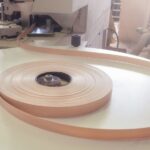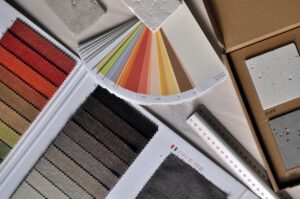
Food packaging plays a crucial role in preserving food quality, extending shelf life, and preventing spoilage, but traditional packaging materials, such as plastic, have led to environmental problems such as pollution, litter, and waste. As a result, there is a growing need for innovative and sustainable food packaging solutions that can address these challenges. In this blog, we will explore some of the latest developments in food packaging technology that goes beyond the basics to provide innovative and sustainable solutions, whether that’s with food packaging labels or the materials used.
Edible and Biodegradable Packaging
One of the most promising and exciting developments in sustainable food packaging is the development of edible and biodegradable packaging materials.These materials are made from natural and renewable sources such as seaweed, potato starch, and corn starch and are fully biodegradable and compostable.

Unlike traditional plastic packaging, which takes hundreds of years to break down, edible and biodegradable packaging materials break down quickly, leaving behind no harmful residue. These materials are also edible, which means that they can be eaten along with the food they are packaging, reducing waste and the need for additional packaging.
Smart Packaging
Smart packaging technology involves the use of sensors, indicators, and other innovative features that can help improve food safety, extend shelf life, and reduce waste. For example, some smart packaging materials can detect changes in temperature, humidity, and other environmental factors that can affect food quality and safety. Others can release antimicrobial agents to prevent the growth of harmful bacteria and other pathogens. Smart packaging can also help reduce food waste by alerting consumers when food is about to expire or spoil.
Reusable Packaging
Reusable packaging is another sustainable solution that is gaining popularity. Unlike single-use packaging materials, which are discarded after a single use, reusable packaging can be used multiple times, reducing waste and the need for additional packaging. Reusable packaging can take many forms, such as glass jars, metal containers, or even cloth bags.

Some retailers are also experimenting with innovative reusable packaging models, such as “loop systems,” where consumers can return empty packaging to the store to be cleaned and reused.
Nano Packaging
Nano packaging involves the use of nanotechnology to create packaging materials with unique properties that can help improve food safety and quality. For example, nanoscale particles can be used to create packaging materials that are antimicrobial, preventing the growth of harmful bacteria and other pathogens. Nanoparticles can also be used to create packaging materials that are more durable and resistant to damage, extending shelf life and reducing waste. While nano packaging is still in the early stages of development, it holds great promise for creating innovative and sustainable food packaging solutions.
As the world becomes more aware of the environmental impact of traditional packaging materials, the demand for innovative and sustainable food packaging solutions is growing. Edible and biodegradable packaging, smart packaging, reusable packaging, and nano packaging are just a few of the many developments in this area. While these solutions are still in the early stages of development, they hold great promise for creating a more sustainable future. As consumers, it is important to consider the environmental impact of the packaging materials we use and support companies that are committed to developing sustainable solutions.









